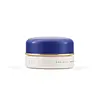What's inside
What's inside
 Key Ingredients
Key Ingredients

 Benefits
Benefits

 Concerns
Concerns

 Ingredients Side-by-side
Ingredients Side-by-side

Water
Skin ConditioningGlycerin
HumectantSqualane
EmollientPropanediol
SolventXylitol
HumectantGlyceryl Stearate Se
EmulsifyingCyclopentasiloxane
EmollientBehenyl Alcohol
EmollientMyristyl Myristate
EmollientSilica
AbrasiveBeeswax
Emulsion StabilisingPaeonia Albiflora Root Extract
Skin ConditioningCamellia Japonica Seed Oil
EmollientCamellia Sinensis Leaf Extract
AntimicrobialLonicera Japonica Leaf Extract
Skin ConditioningCoix Lacryma-Jobi Ma-Yuen Seed Extract
Skin ConditioningChondrus Crispus Extract
Skin ConditioningInositol
HumectantSodium Hyaluronate
HumectantTocopheryl Acetate
AntioxidantCaprylyl/Capryl Glucoside
CleansingCaprylic/Capric/Myristic/Stearic Triglyceride
EmollientTetrasodium Pyrophosphate
BufferingDisodium EDTA
Sodium Acrylate/Acryloyldimethyltaurate/Dimethylacrylamide Crosspolymer
Emulsion StabilisingSodium Dilauramidoglutamide Lysine
HumectantIsostearic Acid
CleansingSorbitan Isostearate
EmulsifyingEthylhexylglycerin
Skin ConditioningAluminum Hydroxide
EmollientParfum
MaskingStearyl Alcohol
EmollientAlcohol
AntimicrobialPhenoxyethanol
PreservativeCI 77891
Cosmetic ColorantCI 77491
Cosmetic ColorantWater, Glycerin, Squalane, Propanediol, Xylitol, Glyceryl Stearate Se, Cyclopentasiloxane, Behenyl Alcohol, Myristyl Myristate, Silica, Beeswax, Paeonia Albiflora Root Extract, Camellia Japonica Seed Oil, Camellia Sinensis Leaf Extract, Lonicera Japonica Leaf Extract, Coix Lacryma-Jobi Ma-Yuen Seed Extract, Chondrus Crispus Extract, Inositol, Sodium Hyaluronate, Tocopheryl Acetate, Caprylyl/Capryl Glucoside, Caprylic/Capric/Myristic/Stearic Triglyceride, Tetrasodium Pyrophosphate, Disodium EDTA, Sodium Acrylate/Acryloyldimethyltaurate/Dimethylacrylamide Crosspolymer, Sodium Dilauramidoglutamide Lysine, Isostearic Acid, Sorbitan Isostearate, Ethylhexylglycerin, Aluminum Hydroxide, Parfum, Stearyl Alcohol, Alcohol, Phenoxyethanol, CI 77891, CI 77491
Isononyl Isononanoate
EmollientCamelina Sativa Seed Oil
Skin ConditioningC12-15 Alkyl Benzoate
AntimicrobialMethyl Methacrylate Crosspolymer
Prunus Amygdalus Dulcis Oil
Skin ConditioningWater
Skin ConditioningPropanediol
SolventDi-C20-40 Alkyl Dimer Dilinoleate
Skin ConditioningGlycerin
HumectantParfum
MaskingSorbitan Stearate
EmulsifyingChlorphenesin
AntimicrobialSimmondsia Chinensis Seed Oil
EmollientCaprylic/Capric Triglyceride
MaskingHydrolyzed Hyaluronic Acid
HumectantChlorella Vulgaris Extract
Skin ConditioningTocopherol
AntioxidantAnogeissus Leiocarpa Bark Extract
Skin ConditioningSodium Dehydroacetate
PreservativeHelianthus Annuus Seed Oil
EmollientHydroxypropyl Cyclodextrin
MaskingPhenoxyethanol
PreservativeLinalool
PerfumingCitronellol
PerfumingButylphenyl Methylpropional
PerfumingCananga Odorata Flower Oil
MaskingEugenia Caryophyllus Bud Oil
MaskingPhytosterols
Skin ConditioningLimonene
PerfumingGelidium Cartilagineum Extract
Skin ProtectingHydroxycitronellal
PerfumingPadina Pavonica Thallus Extract
Skin ConditioningGeraniol
PerfumingBenzyl Alcohol
PerfumingEugenol
PerfumingPalmitoyl Tripeptide-38
Skin ConditioningIsononyl Isononanoate, Camelina Sativa Seed Oil, C12-15 Alkyl Benzoate, Methyl Methacrylate Crosspolymer, Prunus Amygdalus Dulcis Oil, Water, Propanediol, Di-C20-40 Alkyl Dimer Dilinoleate, Glycerin, Parfum, Sorbitan Stearate, Chlorphenesin, Simmondsia Chinensis Seed Oil, Caprylic/Capric Triglyceride, Hydrolyzed Hyaluronic Acid, Chlorella Vulgaris Extract, Tocopherol, Anogeissus Leiocarpa Bark Extract, Sodium Dehydroacetate, Helianthus Annuus Seed Oil, Hydroxypropyl Cyclodextrin, Phenoxyethanol, Linalool, Citronellol, Butylphenyl Methylpropional, Cananga Odorata Flower Oil, Eugenia Caryophyllus Bud Oil, Phytosterols, Limonene, Gelidium Cartilagineum Extract, Hydroxycitronellal, Padina Pavonica Thallus Extract, Geraniol, Benzyl Alcohol, Eugenol, Palmitoyl Tripeptide-38
 Reviews
Reviews

Ingredients Explained
These ingredients are found in both products.
Ingredients higher up in an ingredient list are typically present in a larger amount.
Glycerin is already naturally found in your skin. It helps moisturize and protect your skin.
A study from 2016 found glycerin to be more effective as a humectant than AHAs and hyaluronic acid.
As a humectant, it helps the skin stay hydrated by pulling moisture to your skin. The low molecular weight of glycerin allows it to pull moisture into the deeper layers of your skin.
Hydrated skin improves your skin barrier; Your skin barrier helps protect against irritants and bacteria.
Glycerin has also been found to have antimicrobial and antiviral properties. Due to these properties, glycerin is often used in wound and burn treatments.
In cosmetics, glycerin is usually derived from plants such as soybean or palm. However, it can also be sourced from animals, such as tallow or animal fat.
This ingredient is organic, colorless, odorless, and non-toxic.
Glycerin is the name for this ingredient in American English. British English uses Glycerol/Glycerine.
Learn more about GlycerinParfum is a catch-all term for an ingredient or more that is used to give a scent to products.
Also called "fragrance", this ingredient can be a blend of hundreds of chemicals or plant oils. This means every product with "fragrance" or "parfum" in the ingredients list is a different mixture.
For instance, Habanolide is a proprietary trade name for a specific aroma chemical. When used as a fragrance ingredient in cosmetics, most aroma chemicals fall under the broad labeling category of “FRAGRANCE” or “PARFUM” according to EU and US regulations.
The term 'parfum' or 'fragrance' is not regulated in many countries. In many cases, it is up to the brand to define this term.
For instance, many brands choose to label themselves as "fragrance-free" because they are not using synthetic fragrances. However, their products may still contain ingredients such as essential oils that are considered a fragrance by INCI standards.
One example is Calendula flower extract. Calendula is an essential oil that still imparts a scent or 'fragrance'.
Depending on the blend, the ingredients in the mixture can cause allergies and sensitivities on the skin. Some ingredients that are known EU allergens include linalool and citronellol.
Parfum can also be used to mask or cover an unpleasant scent.
The bottom line is: not all fragrances/parfum/ingredients are created equally. If you are worried about fragrances, we recommend taking a closer look at an ingredient. And of course, we always recommend speaking with a professional.
Learn more about ParfumPhenoxyethanol is a preservative that has germicide, antimicrobial, and aromatic properties. Studies show that phenoxyethanol can prevent microbial growth. By itself, it has a scent that is similar to that of a rose.
It's often used in formulations along with Caprylyl Glycol to preserve the shelf life of products.
Propanediol is an all-star ingredient. It softens, hydrates, and smooths the skin.
It’s often used to:
Propanediol is not likely to cause sensitivity and considered safe to use. It is derived from corn or petroleum with a clear color and no scent.
Learn more about PropanediolWater. It's the most common cosmetic ingredient of all. You'll usually see it at the top of ingredient lists, meaning that it makes up the largest part of the product.
So why is it so popular? Water most often acts as a solvent - this means that it helps dissolve other ingredients into the formulation.
You'll also recognize water as that liquid we all need to stay alive. If you see this, drink a glass of water. Stay hydrated!
Learn more about Water